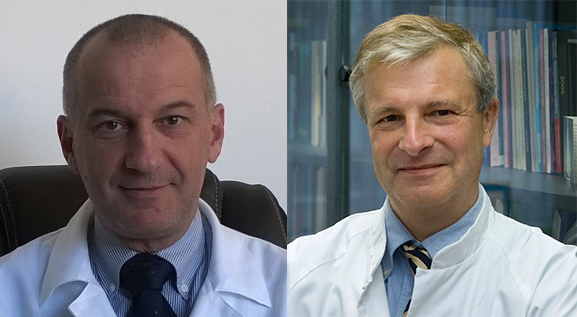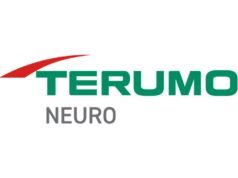
By András Büki and Andrew Maas
Traumatic brain injury is one of the major challenges in health care, representing the third most frequent cause of death worldwide. In Europe, 2.5 million people suffer a traumatic brain injury each year, of whom one million are admitted to hospital and 75,000 die.
Despite considerable efforts both in basic and clinical research, we have not seen a major breakthrough in the care of the head injured in the last three decades. Substantial hope was associated with the introduction of scientific evidence-based guidelines, however contemporary data on the epidemiology did not prove any alteration in the mortality figures of traumatic brain injury. While some associate this with the lack-, or low rate of guideline-compliance, others, including the authors, primarily explain it as a result of insufficient understanding of the underlying pathobiology and inappropriate stratifications of the disease.
In order to provide proper answers to this challenge we have to understand the changing face of traumatic brain injury. More importantly, we should consider traumatic brain injury as a global problem. To this end, while in the western world the incidence of traumatic brain injury is decreasing, and the preponderance of falls in comparison to motor vehicular accidents is increased, in developing countries the growing motorisation and the continuous baby boom leads to increased incidence among the young, active population primarily related to road traffic accidents.
A general problem for the more developed societies is the growing preponderance of the geriatric population among head injured. Due to comorbidities and side effects of medications causing reduced function of the sensory organs and dizziness, the elderly have higher tendency to fall; this subpopulation is also characterised with significantly reduced physiological reserve capacity and reduced scavenge mechanisms of oxidative stress.
Caregivers should face new challenges with increasing proportion of the elderly population; recently published data indicate that the intensity of the care at this specific patient population might be influenced by a lack of enthusiasm about purported outcome—as a self-fulfilling prophecy—leading to worse morbidity and mortality figures. To this end, every effort should be made to provide state-of-the-art care for the elderly subgroup of traumatic brain injury victims with early rehabilitation, as multiple data indicate that such measures could actually lead to similar outcome results observed in the young and middle aged population.
A considerable novel problem primarily, but not exclusively, affecting the aged population, is the more frequent occurrence of altered haemostasis due to vitamin K antagonist and antiplatelet drugs. Recent studies established a direct association between platelet inhibitors and poor outcome in traumatic brain injury. Novel oral anticoagulants—direct thrombin and Xa factor-inhibitors—represent a major challenge as their therapeutic effect is hard to monitor and there is no proven therapy to revert their action.
Contemporary scope of traumatic brain injury research has been substantially altered by recent data from the Track-TBI collaborative group leading to the recognition that our appreciation of mild brain injury (mTBI) might be wrong and even a single episode of CT-negative mTBI may lead to structural damage in the brain demonstrated by routine MRI and that such injury can result in long-term functional consequences. It is also documented that morphometric and functional MRI may identify subtle alterations in victims of minor traumatic brain injury despite negative CT and routine MRI exams. While a recent systematic review indicates that premorbid mental health is the most important determinant of outcome after mild brain injury, the “jury is still out” on how we should identify those patients who are at risk after minor traumatic brain injury and what measures should be employed in their case.
A major drawback hindering our better understanding of traumatic brain injury is associated with the “one size fits all” approach that has dominated the field of therapeutic trials as well as clinical care. This approach is primarily based on the premise established in the experimental laboratory settings that we should standardise every parameter of the injury and investigate alterations in one single measure—than apply the results to every patient. This approach simply does not recognise that head injury is a complex disease affecting the most complex organ of man, also disregarding the extreme heterogeneity of the head injured population as well as the substantial—and well documented—regional differences in health care systems. Another factor slowing down our understanding of traumatic brain injury is derived from the fact that our criteria used for the stratification of traumatic brain injury are (at best) superficial or ill-defined and outdated, most of them lacking any pathobiological significance. This precludes efficient design of clinical trials simply because patient populations cannot be narrowed on the basis of pathobiology driven inclusion criteria, such as the application of biomarkers and other disease and patient specific endpoints.
The above recognitions and the inseminating work of the taskforce of the Common Data Elements—study group set the stage for novel research initiatives aiming at the re-characterisation of the disease itself applying novel enrolment strategies no longer based on the ill-defined injury-severity linked classification systems. This novel approach is reflected in the Int-BIR collaboration and its European part, the CENTER TBI project supported by the FP-7 framework programme of the European Union.
In this work, more than 5,000 patients will be enrolled into three strata such as patients taken care of at the emergency room (admitted to the floor), or to the intensive care unit. This study does recognise the heterogeneity of care reflected in the application of the principles of comparative effectiveness research. Expected data will not only help us to describe and characterise traumatic brain injury in a novel, far more comprehensive way, but also include biosamples for biomarker and genetic analysis, as well as information from physiological monitoring also serving the purpose of legacy research.
It is of note that funding for the above programmes is only a fraction compared to the social and economic burden head injuries are associated with worldwide, however, this ambitious project and its international sister programmes should represent the first step towards a better understanding and care for the silent epidemic represented by traumatic brain injury.
András Büki is professor and chairman, Department of Neurosurgery, Pécs University, Pécs, Hungary
Andrew I R Maas is professor and chairman, Department of Neurosurgery, University Hospital Antwerp, Antwerp, Belgium










